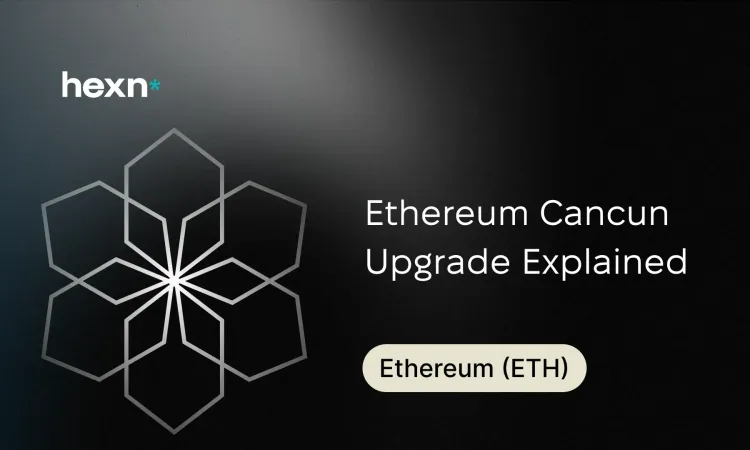Ethereum Cancun Upgrade Explained
What Is Ethereum Cancun Upgrade?
The Ethereum Cancun upgrade (also known as Dencun) introduces proto-danksharding and related changes to make the network cheaper and faster for users and Layer 2 solutions. In plain terms, it adds new ways to handle large amounts of transaction data so rollups and dapps can scale more affordably while preparing the chain for future full sharding.
Why It Matters
The upgrade bundles a set of protocol changes designed to improve how Ethereum stores and moves data. Rather than changing consensus rules again, Cancun focuses on the execution layer to reduce costs for data-heavy workloads and to boost throughput for rollups. For anyone building or using smart contracts, the practical result should be lower fees and smoother user experience for transactions that rely on off-chain computation.
Core Technical Ideas
What is Proto-Danksharding?
Proto-danksharding is an interim step toward full danksharding. It introduces a new data format and marketplace that makes it cheaper to publish large batches of rollup data to Ethereum. Think of it as a temporary, lower-cost channel for posting bulky data — a bridge between today’s model and the final sharding design.
What are Blob-Carrying Transactions?
Blob-carrying transactions let users attach large, temporary data blobs to transactions without storing that data permanently on the main chain. These blobs are priced and handled differently from normal transaction data, which reduces gas costs for rollups that need to post proof or state information to Ethereum.
Key Improvement Proposals
The Cancun deployment implements several EIPs that work together to unlock the new data flow and protect contracts and state. The most notable are:
- EIP-4844 – introduces proto-danksharding and blob-carrying transactions to cut data costs for rollups.
- EIP-1153 – adds mechanisms to reuse cleared storage slots and reduce on-chain data bloat.
- EIP-4788 – exposes certain consensus information to execution layers to improve interoperability.
- EIP-6780 – limits SELFDESTRUCT behavior to make contract state more predictable and safer.
These EIPs together streamline data handling, gas pricing for data, cross-layer coordination, and contract safety.
Practical Benefits to Expect
The upgrade targets several concrete improvements that affect everyday activity on the network:
- Lower data costs: Blob transactions reduce the price of submitting rollup data, which should lower Layer 2 fees passed to end users.
- Higher effective throughput: By moving large data into the new blob system, rollups can process more transactions per second overall.
- Smarter on-chain storage: Storage optimizations reduce long-term chain bloat and make some operations cheaper.
- Better interoperability: Exposing consensus metadata helps different chains and execution clients coordinate more easily.
- Improved contract safety: Restricting destructive opcodes reduces sudden contract removals and their downstream effects.
Potential Risks, Developer Considerations, and Migration Steps
While the upgrade is designed to be backwards-compatible, there are areas to watch:
- Some smart contracts or tooling that assume current gas accounting or data availability models may need testing and updates.
- New data formats mean rollup teams and node operators should adapt their clients to consume and publish blobs correctly.
- Any major protocol change carries implementation risk; thorough testing in staging environments and audits are recommended before relying on new behaviors in production.
Teams should run their contracts and integrations against upgraded clients, check assumptions about gas price sensitivity, and confirm that monitoring and backups still work with the new data flow.
Launch Timeline and Network Upgrade Status
The upgrade was originally targeted for October 2023 but was postponed into the first half of 2024. The Cancun (Dencun) changes went live on the mainnet on March 13, 2024. Node operators, validators, and infrastructure providers needed to update to compatible client releases to participate fully and avoid disruption.
Final Perspective
Cancun is a step along Ethereum's long-term scaling roadmap. By introducing proto-danksharding and cheaper blob publishing, it reduces friction for Layer 2 rollups and makes a future with full danksharding more attainable. For developers and users, the most immediate payoff is lower data fees and better capacity for applications that depend on posting large amounts of off-chain data to Ethereum.
As with any upgrade, the full benefits will emerge as tooling, rollups, and wallets adopt the new primitives. Staying informed, testing integrations, and updating clients are the best ways to prepare for and benefit from these improvements.
